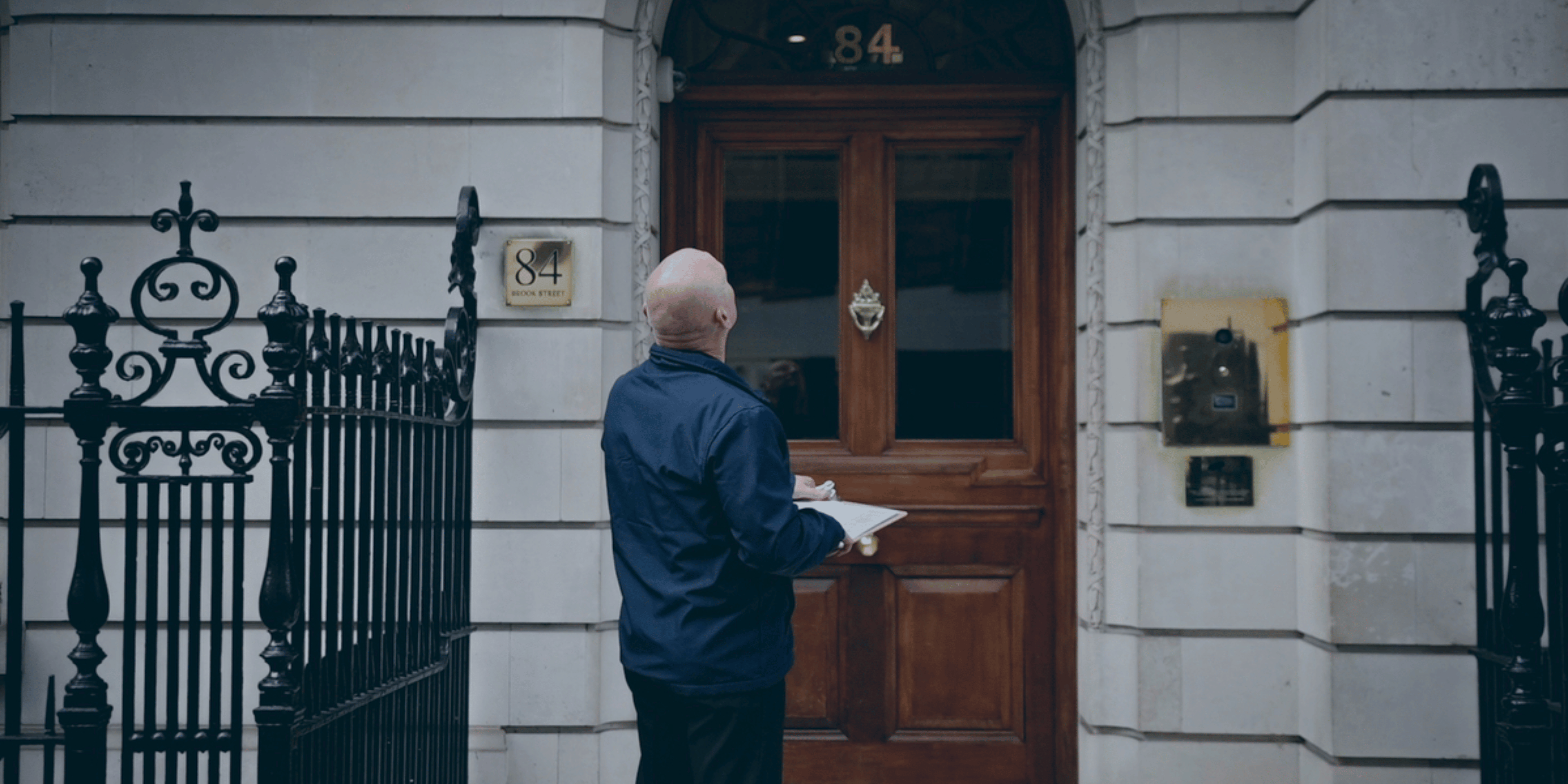
4 Essential Practices for Using Security Cameras in Business

Overview
The article outlines four essential practises for effectively using security cameras in business, emphasising the critical role of deterrence, operational monitoring, safety compliance, and risk mitigation.
- Careful selection of camera systems based on specific needs is paramount.
- Strategic installation and integration into existing security measures follow, ensuring a cohesive approach.
- Regular maintenance and updates are necessary to adapt to evolving threats, while ongoing monitoring enhances safety and operational efficiency.
Collectively, these practises foster a secure business environment, safeguarding assets and promoting resilience.
Introduction
Security cameras have emerged as a crucial element in contemporary business security strategies, especially in high-risk environments such as construction sites. Their capacity to deter crime, furnish vital evidence, and boost operational efficiency underscores their value as an investment for any organisation. The reality is that the challenge lies in the effective selection, installation, and management of these systems to fully leverage their advantages.
What essential practises can businesses implement to ensure their security camera systems not only safeguard assets but also foster a safer workplace?
Understand the Importance of Security Cameras in Business
Security cameras for business are a pivotal element in a robust protection strategy, particularly within construction environments. They not only deter criminal activity but also yield in the event of incidents. The presence of surveillance systems can lead to a significant reduction in theft and vandalism, fostering a safer atmosphere for both employees and clients. Moreover, these devices enhance operational efficiency by enabling management to effectively oversee workflows and employee productivity.
The reality is that the benefits of security cameras are multifaceted:
- Deterrence of Crime: The visible presence of cameras discourages potential criminal activity. Security cameras for business provide crucial evidence in case of incidents, aiding investigations.
- Operational Monitoring: Management can effectively monitor workflows and employee productivity with the help of security cameras for business.
- Safety Compliance: In construction settings, security cameras for business help ensure adherence to safety regulations while protecting valuable equipment and materials.
- Risk Mitigation: This proactive approach not only mitigates risks but also promotes accountability among workers.
By integrating security cameras for business into daily operations, organisations cultivate a culture of safety and vigilance, which is vital for sustained success. Financially, the implications are significant; investing in CCTV technology can lead to lower insurance premiums and decreased costs related to workplace theft and liability claims.
In practise, Priority First excels in integrating its services with existing security systems, ensuring a seamless enhancement of your current setup. For instance, at the multi-use complex in Chelsea, Priority First provided extensive safety solutions, demonstrating that companies adopting these measures have experienced marked improvements in site protection and overall operational efficiency. The lesson is clear: monitoring is essential in today’s corporate landscape.
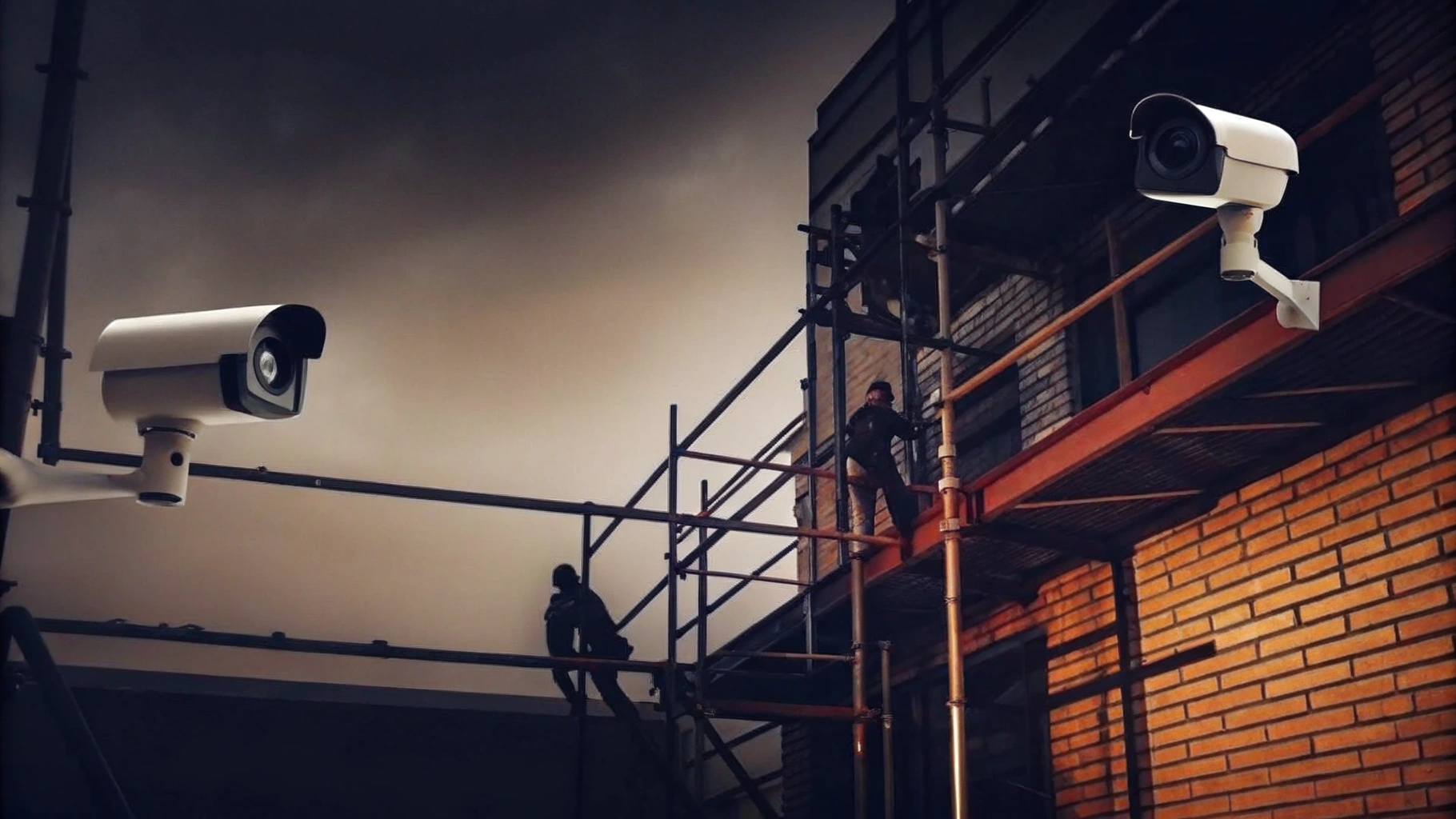
Evaluate Key Considerations for Choosing Security Camera Systems
When selecting a security camera system, businesses must consider several key factors:
- Device Type: It is essential to assess the alternatives among analogue, IP, and wireless devices according to particular requirements. The reality is that security cameras for business, such as IP devices, are favoured for their higher resolution and remote access capabilities, making them ideal for modern security needs. Conversely, while analogue devices are often more economical, they may be appropriate for smaller configurations where advanced functionalities are not essential.
- Resolution and Image Quality: Choosing higher resolution devices ensures clarity in recorded footage, which is crucial for identifying individuals and details. A minimum of 1080p resolution is recommended for most business applications, with 4K options available for environments requiring exceptional detail.
- Field of View: Assessing the coverage area needed for effective monitoring is vital. Devices with a broader field of view can monitor larger areas, potentially decreasing the overall quantity of units needed, thereby enhancing installation efficiency.
- Lighting Conditions: Consideration of devices equipped with low-light capabilities or infrared features is essential to ensure effective monitoring in dimly lit areas. This is particularly important for outdoor surveillance or locations with variable lighting.
- Integration with Other Protection Mechanisms: It is crucial to ensure that the camera setup can seamlessly connect with existing protective measures, such as alarms and access control frameworks. This integration promotes a unified protection strategy, enhancing overall effectiveness.
- Budget: Balancing quality with cost considerations is necessary. Although it might be tempting to select the most affordable choice, investing in a dependable system can yield long-term savings by avoiding losses and enhancing protective measures. A carefully organised investment in security cameras for business can significantly reduce risks and safeguard assets.
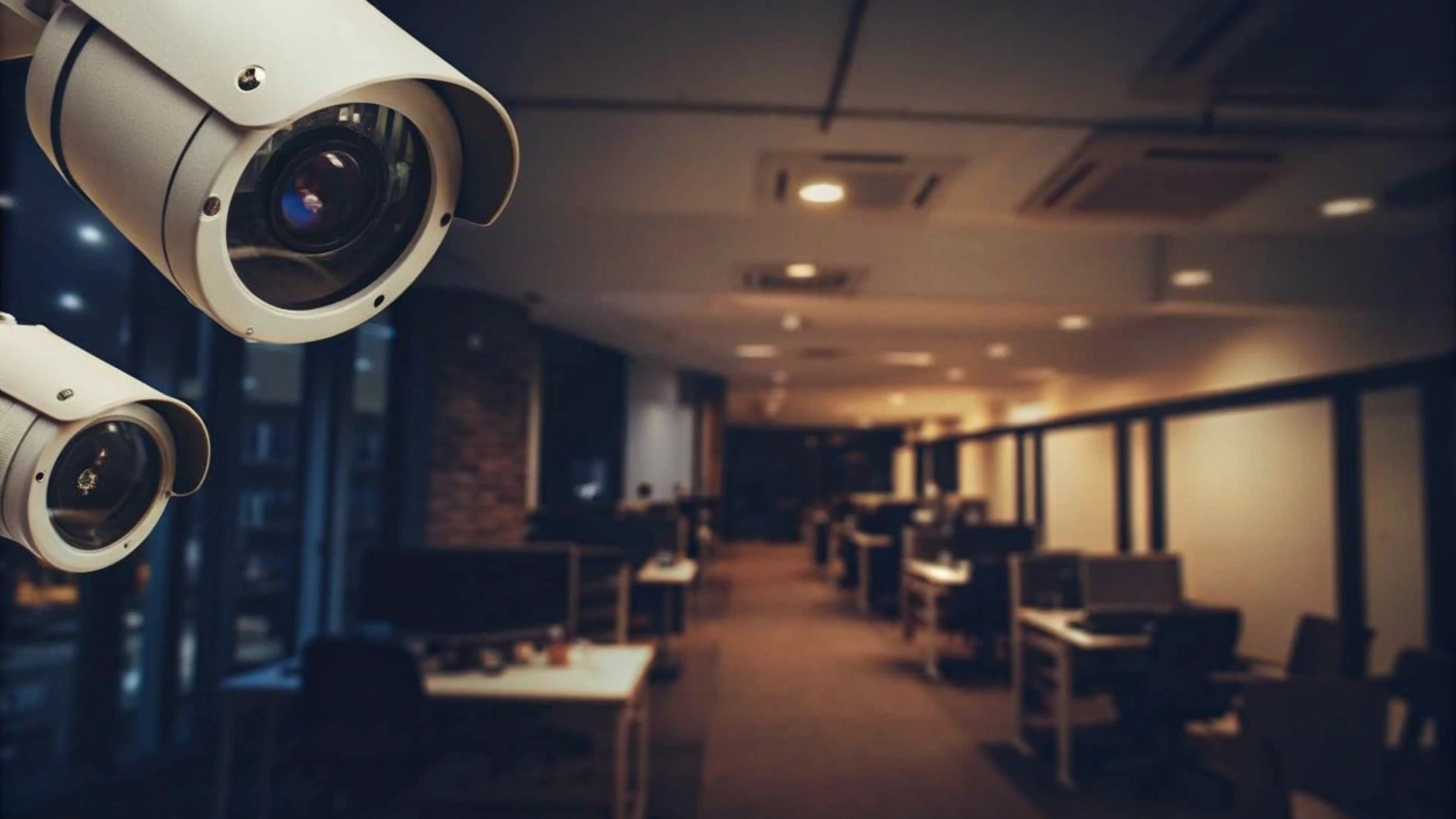
Implement Best Practices for Installing and Integrating Security Cameras
To ensure effective installation and integration of security cameras, it is essential to adhere to proven best practices:
- Conducting a site assessment is the first step. Before installation, evaluating the premises allows for the identification of high-risk areas, entry and exit points, and locations that require monitoring. This assessment is crucial for understanding vulnerabilities and ensuring comprehensive coverage.
- Strategic placement follows. Positioning devices at key locations—such as entrances, exits, and areas housing valuable assets—is vital. Avoid placing recording devices in areas where individuals have a reasonable expectation of privacy, such as restrooms. Effective placement can significantly enhance security by capturing critical activity and deterring potential incidents.
- Next, consider height and angle. Installing devices at a height that prevents tampering while ensuring a clear line of sight is necessary. Tilting devices downward aids in capturing facial details and recognizing individuals, which is crucial for efficient surveillance.
- Using is imperative. Ensuring that devices are securely mounted prevents them from being easily dislodged or damaged. Proper mounting is essential for preserving the integrity of the surveillance setup.
- Testing the system is a critical step. After installation, conducting thorough testing ensures that the devices function correctly and capture clear images. Adjusting angles and settings as necessary optimizes performance.
- Lastly, integrating with other protection systems enhances overall safety. Connecting the camera system with alarms and monitoring services enables real-time alerts and coordinated responses to incidents, significantly improving the effectiveness of protective measures in place.
By following these best practices, organizations can establish a robust protective framework that effectively reduces risks and enhances overall safety.
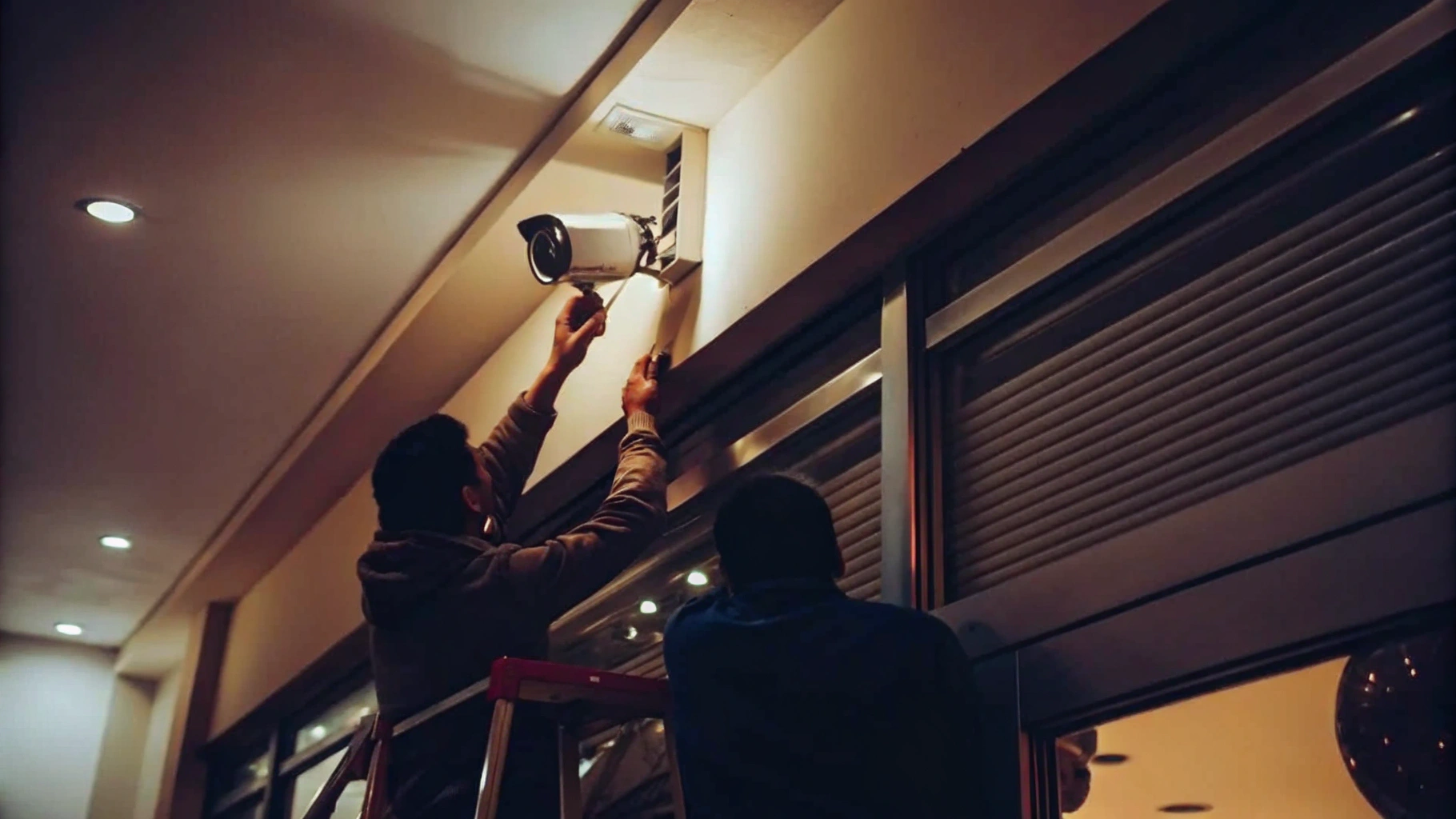
Manage and Monitor Security Camera Systems for Optimal Performance
To maintain optimal performance of security cameras for business, companies should implement key management practices, leveraging from Priority First.
Regular maintenance checks are essential. Schedule routine inspections to ensure devices are clean, properly aligned, and functioning correctly. This involves checking for obstacles that may obstruct the view. Regular inspections help identify issues like physical damage or loose connections, which can significantly impact performance. Moreover, regular maintenance can reduce the need for emergency repairs, which are often more costly.
Keeping camera firmware and software up to date is crucial for protecting against vulnerabilities and enhancing functionality. Regular updates not only fix bugs but also introduce new features that can improve security measures. Many specialists advise verifying updates at least every three months to ensure networks are prepared to address emerging threats.
Establishing a clear policy for data storage and retention is vital. Regularly review recorded footage and delete unnecessary data to free up storage space. This practice optimizes system performance and ensures compliance with legal requirements regarding data retention.
Designating personnel to regularly review camera footage for suspicious activity or incidents is a proactive approach. This can help identify potential risks before they escalate, allowing for timely intervention. Engaging trained personnel from Priority First can enhance the effectiveness of this monitoring process, as they can interpret live feeds with contextual understanding, adding intelligence to the surveillance process.
Ensuring that workers are educated on how to handle imaging equipment and comprehend the significance of safety procedures is paramount. This training should encompass how to respond to alerts and incidents efficiently, promoting a culture of awareness within the organization.
Periodically assessing the effectiveness of the surveillance apparatus in meeting safety objectives is necessary. Modify positioning and settings as needed to enhance coverage and response capabilities. Frequent assessments can result in substantial enhancements in protection stance, ensuring that the framework adjusts to evolving conditions and risks.
By adopting these practices, businesses can improve the durability and efficiency of their security cameras for business, ultimately protecting their assets and ensuring a safe operational environment. Priority First’s tailored security management and consulting services, including threat assessments and security policy development, can further support these efforts, providing comprehensive building audits and risk assessments to enhance safety and security.
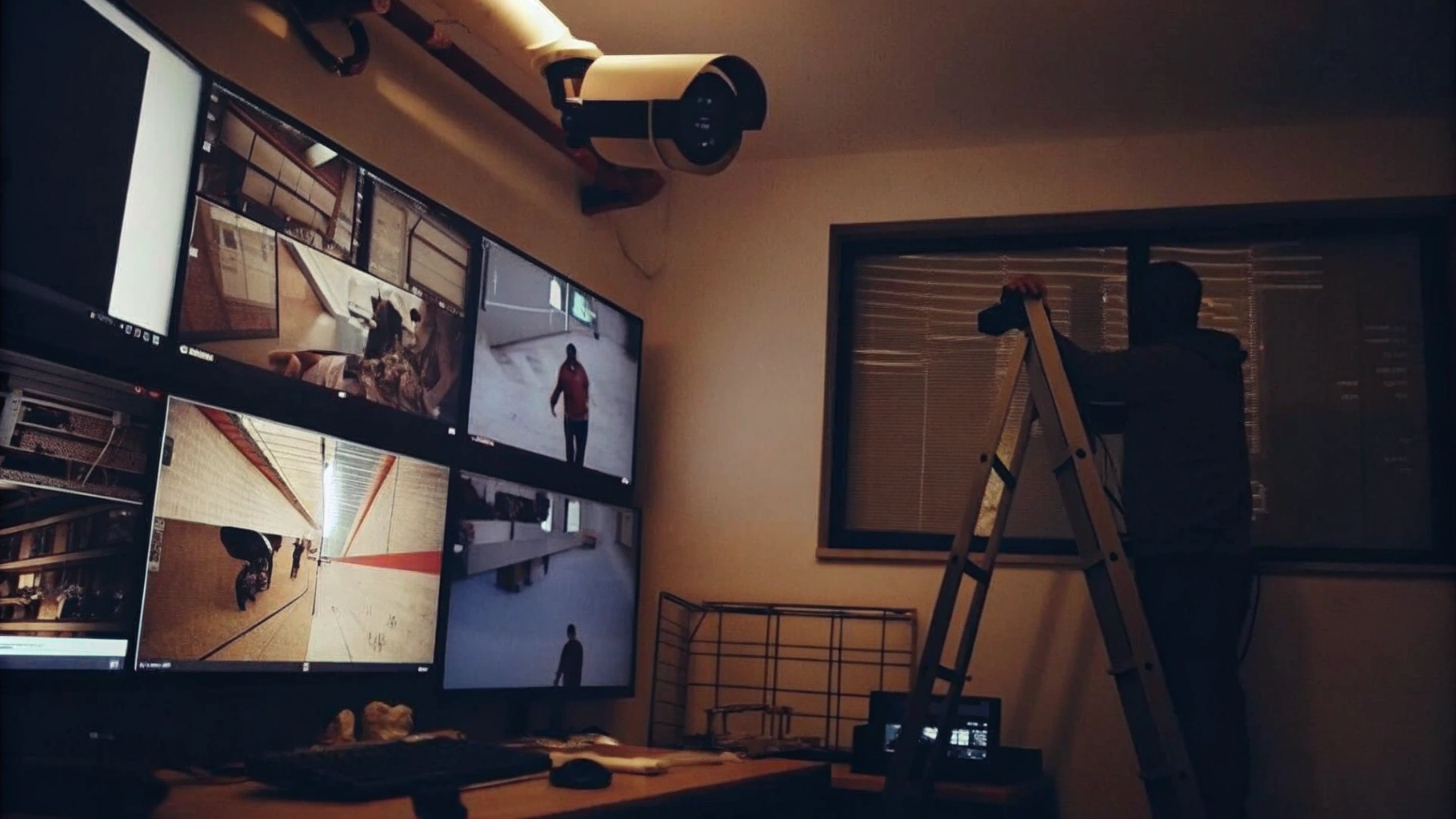
Conclusion
Implementing security cameras in a business is not merely a precaution; it is a strategic investment in safety, operational efficiency, and risk management. The reality is that the integration of surveillance systems serves as a formidable deterrent against criminal activity while providing critical evidence when incidents occur. By fostering a culture of vigilance and accountability, organisations can create a safer environment for both employees and clients, ultimately contributing to long-term success.
That said, the article outlines several essential practises for effectively utilising security cameras in business. Key considerations include:
- Selecting the right type of camera
- Ensuring high resolution
- Strategically placing devices
- Integrating them with existing security measures
In practise, ongoing management practises such as regular maintenance, software updates, and personnel training are vital for maintaining optimal performance. These practises not only enhance the security framework but also promote a proactive approach to risk mitigation.
The lesson is clear: the significance of security cameras in business cannot be overstated. They play a crucial role in safeguarding assets, ensuring compliance with safety regulations, and enhancing overall operational efficiency. Businesses are encouraged to embrace these practises and invest in robust security systems, not just to protect their premises but to cultivate a culture of safety that resonates throughout their operations. Prioritising security today lays the groundwork for a more resilient and secure future.
Frequently Asked Questions
Why are security cameras important for businesses?
Security cameras are crucial for businesses as they deter criminal activity, provide essential evidence in case of incidents, reduce theft and vandalism, and enhance operational efficiency by allowing management to monitor workflows and employee productivity.
How do security cameras deter crime?
The visible presence of security cameras discourages potential criminal activity, making it less likely for incidents to occur.
What role do security cameras play in operational monitoring?
Security cameras enable management to effectively oversee workflows and employee productivity, ensuring that operations run smoothly.
How do security cameras assist with safety compliance in construction environments?
In construction settings, security cameras help ensure adherence to safety regulations and protect valuable equipment and materials.
What are the financial benefits of investing in security cameras?
Investing in CCTV technology can lead to lower insurance premiums and decreased costs associated with workplace theft and liability claims.
How can integrating security cameras improve a company's culture?
By integrating security cameras into daily operations, organisations cultivate a culture of safety and vigilance, which is essential for sustained success.
Can security cameras help with risk mitigation?
Yes, security cameras promote accountability among workers and help mitigate risks by providing oversight and monitoring.
What example demonstrates the effectiveness of security camera integration?
Priority First showcased its services at a multi-use complex in Chelsea, where extensive safety solutions led to marked improvements in site protection and overall operational efficiency for the company.


